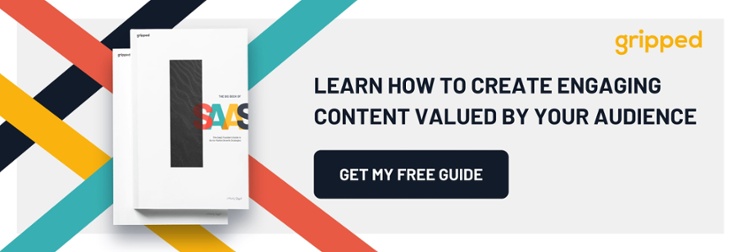Content marketing relies on the “who”, “what”, “when”, “how”, and “why” of consumer behaviour. While it’s easy enough to answer some of these questions, deciphering “why” customers buy from you is always a challenge.
So, ask yourself: beyond the features and quality of your product, why do customers choose your B2B brand? The answer to this critical question lies in your understanding of psychographics.

Psychographics enable you to better understand your target audiences’ personalities, emotions, and motivations. And how it affects their interaction with your product. This is what makes psychographics a marketing game-changer. It gives your strategy an edge that can improve brand awareness, increase sales, and build business value.
We’ll consider how you can use psychographics to create content for a successful marketing strategy. But first, let’s look at its definition from a business perspective.
What is Psychographics?
According to the Business Dictionary, psychographics is analysing different consumer lifestyles. The data from the analysis is then used to create detailed profiles.
Although this might seem related to demographic segmentation, there’s a difference. While demographics examine who your customers are, psychographics focus on why they would buy from your brand. Thus, demographics cover factors like age, race, occupation, gender, or income. Psychographics examine consumer interests, values, lifestyle, personality, or motivation.

When looking for such information, you’ll need to do a bit more digging. You can use polls, interviews, or quizzes to learn about how your products fit into your consumers’ values and goals. Both aspects are essential to your content creation process. But our focus today is on psychographics in marketing, and here are our seven tips on how you can go about it.
1. Create customer-focused content topics
Your audience is more interested when your product is customer-centric rather than product-centric. Business customers want to hear you sell a need and problem solver — not just a product. A brand that understands this well is the marketing automation platform Mailchimp. From small to big eCommerce retailers, Mailchimp helps businesses send better emails. And they likewise enable marketing campaigns via email. This practical focus on customer outcomes is a large part of their success.

Irrespective of your industry, understanding your customer needs is always vital. What gives them a hard time, and what can make their lives easier? With the data you draw from your psychographic examples, you can create content that addresses these needs. There’s no better creation strategy than this. It doesn’t mean that you won’t advertise your product. But your key focus should be on the customer, with the help of your product or service.
2. Use a language that your audience finds appealing
By profiling your audiences using psychographics, it’s easier to understand what appeals to them. It involves the kind of words, tone, lingo, and imagery that they know.

For example, if you sell to small or new businesses, focusing on terms like “growth”, “scale”, “establish” will help you connect with the wants and desires of that audience. Enterprise businesses will be more concerned with “consolidating” or “expanding market presence”, or introducing “agility” into their workflows.
You can use psychographic data in places like your headline or call-to-action buttons. At a glance, your target audience gets a hint of what your content entails and are more eager to buy-in.
3. Leverage examples and case studies
Giving examples in any content has proven to drive excellent results. Psychographic marketing will help you pick the most impactful examples. With a clear understanding of your customers’ values, you’re better positioned to use examples to inspire them.

For instance, a professional writing review website, like Online Writer Rating, should use examples that inspire and motivate. Instead of focusing on excellent paper writing services, engage customers using relatable examples. You can also use content to demonstrate examples of exactly the kind of content they will be looking for. Let them know your services are professional and available to give them the best.
4. Refine your social media audiences and post relevant information
Social media can work wonders for B2B business. 57% of inbound marketers have gotten leads from Linkedin, and 52% report getting leads from Facebook. Rather than sticking to traditional marketing, you can integrate social media into your strategy. This can help to improve content marketing results. You need to research the right platforms to use, your target audience, and the type of content to post.
Need help with your social media strategy? ️📱
Book in your FREE one-to-one session with one of our Growth Experts. We’ll assess your current marketing strategy and lay out actionable steps for you to target the right audience on social media.
The data from your psychographic analysis can guide you towards setting up the right channels and content. Take LinkedIn, for example. The platform has cultivated a reputation for smart business insight. LinkedIn’s vast array of content covers “how-tos,” business articles, news, and job openings. Such content options make it stand out as one of the best B2B brands that well-informs their business clients.
5. Reinforce your brand values
Most B2B brands use storytelling to share their values in ways it connects customers to the company. An example of this is the sales technology company Salesforce. Using their Success Stories page, they leave it up to their customers to tell their stories for them. Customers can share how Salesforce has helped them to grow their businesses.
You should look to replicate this for your business. It speaks volumes about what your brand stands for when reviews are coming from other customers. Likewise, it’s an opportunity for you to get organic feedback and create content that reflects your brand values.

6. Create personalised and relevant email marketing
Creating personalised emails is an excellent way to increase your open rates. Tapping into your psychographic marketing gives you a better idea of how to personalise these emails. You can create enticing subject lines, text, or insert links to relevant pages. The content of the emails should match the subject, while making subscribers want to ask questions and entice them.

For example, Expert Institute, a legal services platform for investment firms, personalised their emails with first names, as well as segmenting their email lists according to the level of engagement of subscribers, which resulted in a 200% increase in conversions. Those who engaged more received specific offers about their services, and those who engaged less were sent access to free content like eBooks. The emails should also make the subscriber want to ask questions and create a sense of urgency.
7. Improve conversions
Using psychographic data you can better understand why specific landing pages put off some clients. With this information, you get to know more about your target audience. And optimise the branding, copy, and visuals on landing pages that’ll attract them the most.
You can create pages that hold the potential customer’s attention beyond first glance. Thus the chances of an increase in conversion rates are more.
Psychographics help you understand your customers
Psychographic study is a fascinating field that can add several benefits to your content strategies. It provides you with data about your target audiences’ beliefs and interests. And also, the reasons why they engage with your products. With this information, you can cater to their needs in a personal manner while increasing your revenue.
This is a guest blog written by Aaron Swain. Aaron is a writing specialist who is currently working in the writing service reviews company Best Writers Online. He is passionate about marketing and SEO. He expands and improves his skills throughout the writing process to help and inspire people.
